Acoustic sensors enable efficient and non-invasive monitoring of a wide range of species, including many that are difficult to monitor in other ways. Although they were initially limited in application scope largely due to cost and hardware constraints, the development of low-cost, open-source models like the Audiomoth in recent years has increased access immensely and opened up new avenues of research. For example, some teams are using them to identify illicit human activities through the detection of associated sounds, like gunshots, vehicles, or chainsaws (e.g. OpenEars).
With this relatively novel dimension of wildlife monitoring rapidly advancing in both marine and terrestrial systems, it is crucial that we identify and share information about the utility and constraints of these sensors to inform efforts. A recent study identified advancements in hardware and machine learning applications, as well as early development of acoustic biodiversity indicators, as factors facilitating progress in the field. In terms of limitations, the authors highlight insufficient reference sound libraries, a lack of open-source audio processing tools, and a need for standardization of survey and analysis protocols. They also stress the importance of collaboration in moving forward, which is precisely what this group will aim to facilitate.
If you're new to acoustic monitoring and want to get up to speed on the basics, check out these beginner's resources and conversations from across the WILDLABS platform:
Three Resources for Beginners:
- Listening to Nature: The Emerging Field of Bioacoustics, Adam Welz
- Ecoacoustics and Biodiversity Monitoring, RSEC Journal
- Monitoring Ecosystems through Sound: The Present and Future of Passive Acoustics, Ella Browning and Rory Gibb
Three Forum Threads for Beginners:
- AudioMoth user guide | Tessa Rhinehart
- Audiomoth and Natterjack Monitoring (UK) | Stuart Newson
- Help with analysing bat recordings from Audiomoth | Carlos Abrahams
Three Tutorials for Beginners:
- "How do I perform automated recordings of bird assemblages?" | Carlos Abrahams, Tech Tutors
- "How do I scale up acoustic surveys with Audiomoths and automated processing?" | Tessa Rhinehart, Tech Tutors
- Acoustic Monitoring | David Watson, Ruby Lee, Andy Hill, and Dimitri Ponirakis, Virtual Meetups
Want to know more about acoustic monitoring and learn from experts in the WILDLABS community? Jump into the discussion in our Acoustic Monitoring group!
Header image: Carly Batist
- @YvanSG
- | he/him
Clemson University
Seabird ecologist at Clemson University, South Carolina Cooperative Fish and Wildlife Research Unit. Co-chair of Caribbean Seabird Working Group. Porteur de béret occasionel.



- 0 Resources
- 61 Discussions
- 7 Groups
- 0 Resources
- 0 Discussions
- 7 Groups
- @VijayKarthick
- | He/Him
Nature Conservation Foundation
I'm a PhD student from India, interested in utilising bioacoustics and technology to answer ecological questions. I'm a frog nerd :)

- 0 Resources
- 2 Discussions
- 9 Groups
- @rowan
- | they / them
Octophin Digital
Jack of all Trades. I've been a zoo keeper, a conservation geneticist and a web developer who specialises in conservation projects and orgs.


- 1 Resources
- 5 Discussions
- 15 Groups
Technologist and Visual storyteller focusing on social, conservations issues.



- 1 Resources
- 42 Discussions
- 17 Groups
- @Valentin_Stefan
- | He/Him
Interested in emerging technologies related to camera traps for pollinators
- 0 Resources
- 4 Discussions
- 18 Groups
- 1 Resources
- 1 Discussions
- 11 Groups
Interested in bioacoustics
- 0 Resources
- 0 Discussions
- 14 Groups
- @fernanda92
- | she
Biologist
- 0 Resources
- 0 Discussions
- 1 Groups
- @NG
- | She
I am a Conservationist and Ornithologist passionate about biodiversity conservation and environmental sustainability.

- 0 Resources
- 1 Discussions
- 7 Groups
A Wildlife Biologist interested in Environment Assessment and Restoration, In-situ and Ex-situ strategies, Technologies used in Conservation and Illegal Wildlife Trade.


- 0 Resources
- 16 Discussions
- 15 Groups
Clemson University
- 0 Resources
- 0 Discussions
- 7 Groups
HawkEars is a deep learning model designed specifically to recognize the calls of 328 Canadian bird species and 13 amphibians.
13 May 2025
The Biological Recording Company's ecoTECH YouTube playlist has a focus on webinars about Bioacoustic monitoring.
29 April 2025
This paper includes, in its supplementary materials, a helpful table comparing several acoustic recorders used in terrestrial environments, along with associated audio and metadata information.
15 April 2025
Conservation International is proud to announce the launch of the Nature Tech for Biodiversity Sector Map, developed in partnership with the Nature Tech Collective!
1 April 2025
PhD position available at the University of Konstanz in the Active Sensing Collective Group!
28 March 2025
InsectSet459 - the first large-scale open dataset of insect sounds, featuring 26,399 audio clips from 459 species of Orthoptera and Cicadidae.
24 March 2025
Naturalis is looking for a postdoc in AI for Ultrasonic Bioacoustic Monitoring
24 March 2025
Postdoctoral opening in the Bioacoustics and Behavioral Ecology Lab at Syracuse University
14 March 2025
Funding
Species identification from audio, focused on birds, amphibians, mammals and insects from the Middle Magdalena Valley of Colombia.
12 March 2025
Building species-specific habitat models for forest bird species using state of the art methods and remote sensing layers
28 February 2025
Osa Conservation is launching our inaugural cohort of the ‘Susan Wojcicki Research Fellowship’ for 2025, worth up to $15,000 per awardee (award value dependent on project length and number of awards given each year)....
10 February 2025
workshop introduced participants to the power of bioinformatics and next-generation sequencing (NGS) in conservation biology.
10 February 2025
June 2025
July 2025
September 2025
event
October 2025
November 2025
event
November 2024
event
October 2024
event
61 Products
| Description | Activity | Replies | Groups | Updated |
|---|---|---|---|---|
| Hi everyone, Thanks for attending today's episode! You can find all of the collaborative notes at the link below, and we also encourage you to use this thread to connect... |
|
Acoustics | 4 years 10 months ago | |
| Hi everyone, If anyone is looking for the episode's collaborative notes, you can find them here: https://notes.datawrapper.de/p/Tech_Tutors_Episode_3 This doc... |
|
Acoustics | 4 years 10 months ago | |
| Hi all, There is a conversation underway in the "Ethics of conservation tech" group on best practices for responsible ue of... |
|
Acoustics | 4 years 11 months ago | |
| How do we get notified for the next group buy? |
|
Acoustics | 5 years ago | |
| Hello all, I am new to recording but have been learning about acousting environmental monitoring for several years now. Covid19 has me... |
|
Acoustics | 5 years ago | |
| Hi Isla, Range at which animals hear sounds depend on 4 things: 1) the frequency (pitch) of the sound of interest. As a rule of thumb, lower frequency sounds travel... |
|
Acoustics | 5 years ago | |
| We used the following lithium batteries. URL: https://fortebattery.en.made-in-china.com/product/FBDEubqyfGhH/China-C-Size-Lithium-Batteries-Cr26500-Cr26500se-... |
|
Acoustics | 5 years ago | |
| Hi Carly, The recording + our notes is here: WILDLABS Virtual Meetup - Acoustic Monitoring We also keep an archive of all past meetups here: ... |
|
Acoustics | 5 years 1 month ago | |
| Hi there I was wondering when this virtual meetup recording will be available? Thanks :) Axel |
|
Acoustics | 5 years 1 month ago | |
| Hi Harold! Great to know you are in the domain. To be honest my analysis so far indicates that when conducting a DSP approach on the spectrum, smoothing via... |
|
Acoustics | 5 years 1 month ago | |
| How can we learn more about your BEESWAX7 buzz identification and counting program, and discuss working together? |
|
Acoustics | 5 years 2 months ago | |
| Hi David, I use cron-like patterns. One form looks something like: mon,wed-sun 0-23:0-59/10 90 which means every day but Tuesdays, every 10 minutes from... |
|
Acoustics | 5 years 8 months ago |
Audiomoth Energy consuption estimates
4 March 2024 12:25pm
17 May 2024 11:42am
Very helpful! Thank you, I'll try that.
19 May 2024 11:27am
Hi Tabitha, What recording settings were you using when you saw these differences? I've measured the consumption across some different firmware versions and I can't see any difference. Were these AudioMoth 1.2.0 devices? Alex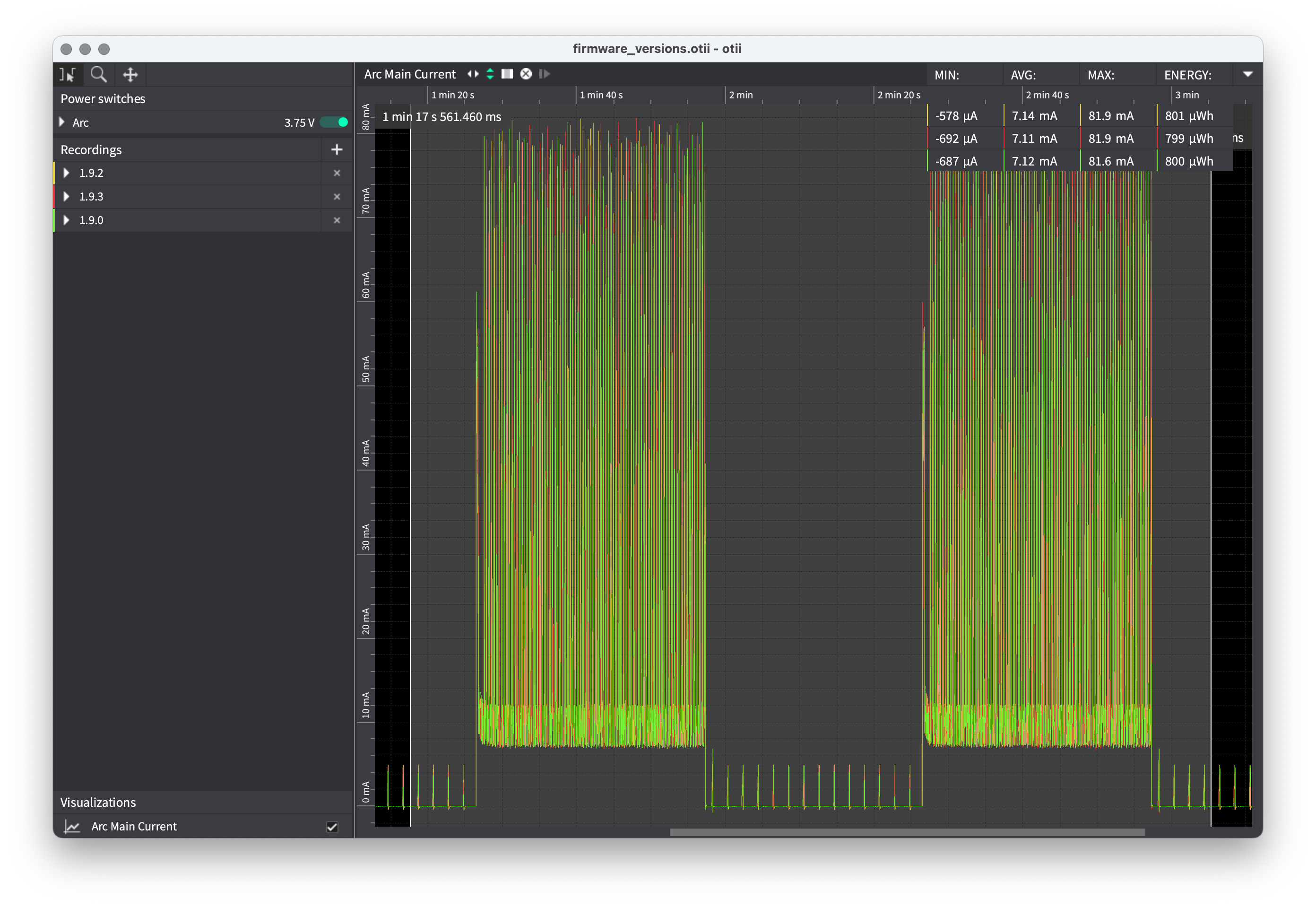
Share Your Work in a Conservation Technology Video
17 May 2024 9:06pm
Survey on European biodiversity monitoring communities
7 May 2024 3:39pm
Advice on a Master's project
4 August 2020 2:07pm
10 March 2021 8:03pm
Yes. The key output for synchronisation is the pulse per second (PPS) output which is synchronised very accurately to UTC. The TX from the GPS module is then useful for reading the time and positions. You generally don't need to be able to send commands to the module as most of the time the default settings are fine.
18 March 2021 5:26pm
Hi Harry (and all)
Just wanted to share some potentially relevant papers that I've come across, in case you haven't found them already. Coming more from the ecology/conservation focused side of conservation tech, but potentially of use to see what's actually been deployed out there!
Yip, D. A., Knight, E. C., Haave‐Audet, E., Wilson, S. J., Charchuk, C., Scott, C. D., ... & Bayne, E. M. (2020). Sound level measurements from audio recordings provide objective distance estimates for distance sampling wildlife populations. Remote Sensing in Ecology and Conservation, 6(3), 301-315. https://zslpublications.onlinelibrary.wiley.com/doi/pdfdirect/10.1002/rse2.118.
Abadi, S. H., Wacker, D. W., Newton, J. G., & Flett, D. (2019). Acoustic localization of crows in pre-roost aggregations. The Journal of the Acoustical Society of America, 146(6), 4664-4671. https://asa.scitation.org/doi/full/10.1121/1.5138133.
Spillmann, B., van Noordwijk, M. A., Willems, E. P., Mitra Setia, T., Wipfli, U., & van Schaik, C. P. (2015). Validation of an acoustic location system to monitor Bornean orangutan (Pongo pygmaeus wurmbii) long calls. American Journal of Primatology, 77(7), 767-776. https://doi.org/10.1002/ajp.22398.
Kershenbaum, A., Owens, J. L., & Waller, S. (2019). Tracking cryptic animals using acoustic multilateration: A system for long-range wolf detection. The Journal of the Acoustical Society of America, 145(3), 1619-1628. https://doi.org/10.1121/1.5092973.
Stinco, P., Tesei, A., Dreo, R., & Micheli, M. (2021). Detection of envelope modulation and direction of arrival estimation of multiple noise sources with an acoustic vector sensor. The Journal of the Acoustical Society of America, 149(3), 1596-1608. https://doi.org/10.1121/10.0003628.
Rhinehart, T. A., Chronister, L. M., Devlin, T., & Kitzes, J. (2020). Acoustic localization of terrestrial wildlife: Current practices and future opportunities. Ecology and Evolution, 10(13), 6794-6818. https://onlinelibrary.wiley.com/doi/pdf/10.1002/ece3.6216.
4 May 2024 3:33pm
Hello!
Long time, no update. @StephODonnell suggested I post here with my thesis and some reflections.
---------------------------------------------------------
TL;DR
My thesis looked into the effects of environmental parameters like wind, temperature, and vegetation on acoustic classification and localisation of terrestrial wildlife, aiming to shed light on the implications for study design.
---------------------------------------------------------
Summary
My thesis centred on improving acoustic data acquisition via an analysis of the physics of sound propagation. The idea driving this was that there isn't enough attention paid to environmental effects on sound. The hope was that this could be used to improve the design of acoustic monitoring systems. COVID shifted the direction away from any practical work, but thankfully we managed to find our way through it by using data within the literature.
The thesis is split into two main sections:
- Improving SNR for sound classification:
I explored environmental factors affecting SNR and their implications for the detection space of a signal.
I've briefly had a look through updates in the field since my thesis, and there is a great paper here. This paper takes a similar approach but does so far more elegantly and completely - definitely worth exploring!
- Error Analysis in Sound Localisation:
I explored how differing environmental conditions from those assumed can influence the TDOA error on a microphone pair, and thus position error. The main parameters looked at were temperature, humidity, wind speed & direction and 2D model error.
Conclusion
I ended with some recommendations for system design such as adding additional sensors for more intelligent monitoring systems, or how to maximise the study area by maximising your SNR.
I also discussed future work. The dream output would have been taking the analysis in the thesis and creating an online tool to be used to optimise sensor placement. Practitioners could use it to quickly input their study features to determine the likely important parameters for their deployment location, and how they can improve data quality. This would involve taking the analysis in the thesis and packaging it into an app - I'm thinking R Shiny or similar.
---------------------------------------------------------
Thoughts
In the end, I felt that it took a long time to figure out a direction for the project , and how to actively contribute to the space. It was (obviously) difficult as I didn't come into this with prior knowledge or a structured plan, and so I was a little disappointed with the outcome. It would have been great to explore some of the things I put down as "future work" - but I guess that's part of the process.
The project was a great intersection of technology and environment and it definitely helped shape the next few years for me. Since finishing I have taken a couple of detours into the workforce. First to a marine robotics company, and then measuring forest carbon with LiDAR. I've now just started a PhD using ocean modelling to map biodiversity in the ocean with an AUV. So despite the challenges in trying to design a project within my interests, it has been pretty foundational for me going forward!
Thanks to everyone that offered help and advice. Likewise, I'm very happy to answer any questions from other students/anyone, and I'm really looking forward to being back in the wildlife tech space!
Harry
Thesis available here.
Acoustically Transparent Epoxy
26 April 2024 3:26pm
1 May 2024 5:35pm
Same issues here. A MEMS is a great idea to pot, but you really need a piezoelectric element for this to work and not a MEMS based on capacitance (btw they're all capacitance, except for one now discontinued...). It was originally made by Vesper, but the company was bought out last year and the MEMS is no longer made.
This is because you're no longer really doing a typical microphone, this would be a contact type hydrophone. For waterproofing, you can actually get a waterproof MEMS. As long as your not submerging this for an extended period, it should do the job. Be sure to keep the cable short between the PCB and the mic as you'll get noise as I've experienced.
For generally answering your question on the "best" epoxy to with sound transparency, in general the harder the material the lower the acoustic impedance. I use Epotec 301 resin with a hardness of 85. Your shape will also influence the resonance frequencies, meaning the flat frequency response will now be distorted and you'll probably have distorted audio. .
3 May 2024 1:25am
You generally don't want to pot MEMS microphones since they're designed to pick up on air pressure changes and adding any material in front of the microphone just introduces another transition layer where pressure waves need to propagate through. Also, potting the MEMS microphone can be tricky since if you get any material in the port, you could damage the microphone or drastically reduce its performance. If you want to seal something with epoxy, take a look at contact microphones. Higher frequencies will be attenuated but depending on the application, it could work.
There are companies, however, that design fabrics that are waterproof/resistant but have a relatively low acoustic impedance. SAATI has a variety of samples that you can request and GORE makes Acoustic Vents that could work. You can design a mechanical housing around your MEMS microphone with small perforations that are covered by one of these materials. I did this for one of my latest projects and it holds up just fine in heavy rain conditions.
3 May 2024 5:34pm
Hi Jesse,
For a material to be acoustically transparent (in air), the speed of sound in the material times its density must match that of air. Realistically, any solid material will have a greater density than air, and a higher speed of sound to boot, so I'm afraid there's no way to match it to air. Sorry.
CollarID: multimodal wearable sensor system for wild and domesticated dogs
3 May 2024 1:42am
3 May 2024 10:14am
Hi Patrick,
This is so cool, thanks for sharing! It's also a perfect example of what we were hoping to capture in the R&D section of the inventory - I've created a new entry for #CollarID so it's discoverable and so we can track how it evolves across any mentions in different posts/discussions that come up on WILDLABS. This thread appears on the listing, and I'll make you three the contacts for it too. But please do go in and update any of the info there as well!
Steph
3 May 2024 2:01pm
Hi Steph,
We appreciate the support! Thanks for the tag and your help managing the community!
Patrick
Drop-deployed HydroMoth
2 April 2024 10:20am
15 April 2024 6:53am
Hi Matthew,
Thanks for your advice, this is really helpful!
I'm planning to use it in a seagrass meadow survey for a series of ~20 drops/sites to around 30 m, recording for around 10 minutes each time, in Cornwall, UK.
At this stage I reckon we won't exceed 30 m, but based on your advice, I think this sounds like not the best setup for the surveys we want to try.
We will try the Aquarian H1a, attached to the Zoom H1e unit, through a PVC case. This is what Aquarian recommended to me when I contacted them too.
Thanks for the advice, to be honest the software component is what I was most interested in when it came to the AudioMoth- is there any other open source software you would recommend for this?
Best wishes,
Sol
21 April 2024 7:10pm
Hey Sol,
No problem at all. Depending on your configuration, the Audiomoth software would have to work on a PCB with an ESP32 chip which is the unit on the audiomoth/hydromoth, so you would have to make a PCB centered around this chip. You could mimic the functionality of the audiomoth software on another chip, like on a raspberry pi with python's pyaudio library for example. The problem you would have is that the H1A requires phantom power, so it's not plug and play. I'm not too aware with the H1e, but maybe you can control the microphone through the recorder that is programmable through activations by the RPi (not that this is the most efficient MCU for this application, but it is user friendly). A simpler solution might be to just record continuously and play a sound or take notes of when your 10 min deployment starts. I think it should last you >6 hours with a set of lithium energizer batteries. You may want to think about putting a penetrator on the PVC housing for a push button or switch to start when you deploy. They make a few waterproof options.
Just somethign else that occured to me, but if you're dropping these systems, you'll want to ensure that the system isn't wobbling in the seagrass as that will probably be all you will hear on the recordings, especially if you plan to deploy shallower. For my studies in Curacao, we aim to be 5lbs negative, but this all depends on your current and surface action. You might also want to think about the time of day you're recording biodiversity in general. I may suggest recording the site for a bit (a couple days or a week) prior to your study to see what you should account for (e.g. tide flow/current/anthropogenic disturbance) and determine diel patterning of vocalizations you are aiming to collect if subsampling at 10 minutes.
Cheers,
Matt
3 May 2024 12:55pm
Hi Sol,
If the maximum depth is 30m, it would be worth experimenting with HydroMoth in this application especially if the deployment time is short. As Matt says, the air-filed case means it is not possible to accurately calibrate the signal strength due to the directionality of the response. For some applications, this doesn't matter. For others, it may.
Another option for longer/deeper deployments would be an Aquarian H2D hydrophone which will plug directly into AudioMoth Dev or AudioMoth 1.2 (with the 3.5mm jack added). You can then use any appropriately sized battery pack.
If you also connect a magnetic switch, as per the GPS board, you can stop and start recording from outside the housing with the standard firmware.
Alex
Your HydroMoth experience!
29 July 2022 1:38pm
1 May 2024 5:45pm
Vinegar is also a great solution! Let it sit overnight and then just scrub it off. As a warning if you don't clean it, your sensitivity does decrease. You might actually see this if you keep it out there for a month that the amplitude of your calls decrease over the month/you might detect fewer calls.
1 May 2024 5:51pm
Hey! I would recommend a few things:
1) set up at least two in the same site kind of back to back or side to side if you have that many. Directionality can influence the number of calls you get and it's just good to know your error rate.
2) Experiment with breaks and recording duration. You wont collect anything if the write time is not long enough to record to your SD card and you'll get empty files.
3) Clean your device every time you take it out or see visible biofouling. Also, add silicon grease every time to your O-ring. Take it out with an O-ring pick and clean the plastic seal, looking for any type of sand/mud/debris. We've had a few flooding incidences, but this is probably because we open them all the time.
4) lower the frequency rate the more data you can collect, so keep it as low as your frequency of interest without clipping your calls. Fish are lower than pretty much everything (2kHz-3kHz).
I hope this helps!
2 May 2024 6:45pm
Oh wow, thank you so much!!!
I will keep that four advices in mind!
Hydromoth settings
9 May 2022 5:03pm
11 August 2023 8:10pm
Hi Ian,
I have hours of an unidentified creature recorded during overnight recording sessions with mutliple hydrophones. We think it is platypus but there is nothing to compare against that isn't from captive sounds. I am waiting on the Hydromoth to become available again so I can do longer term monitoring.
1 May 2024 5:26pm
Hi everyone, I just got my first hydromoth and wanted to test it for aquatic soundscape with interest in Tomistoma, Otter, boat traffic and maybe fishes too! But before that I maybe test it on zoos.
What are your advices, tips, or suggestion for first-time user? thank you!
1 May 2024 5:42pm
You won't get any audio if you don't allow enough time for the hydromoth/audiomoth to write. So when you do a continuous recording you need to experiment a little. I'm sure there is a formula to calculate this, but I haven't figure that out. I typically do 5 min recordings with 10 seconds of write/break time. I think this system is expecting you to subsample, so keep that in mind instead of a continuous recording.
I do 8kHz sampling and get about 7 days of data and then the voltage gets too low and you start getting SD card write errors and missing files.
In terms of analysis, I've had trouble understanding the directionality of the hydromoth and incorporating this into my studies. I always set up two at the same site to check the variability in my call detections and include this into my error analysis.
WILDLABS AWARDS 2024 - Underwater Passive Acoustic Monitoring (UPAM) for threatened Andean water frogs
30 March 2024 3:54pm
5 April 2024 12:13pm
Congratulations, very exciting! Keep us updated!
7 April 2024 6:09pm
This is so cool @Mauricio_Akmentins - congrats and look forward to seeing your project evolve!
1 May 2024 5:17pm
Congratulations! My first hydromoth was just arrived yesterday and so excited! Looking forward for the update from your project!!!
The Inventory User Guide
1 May 2024 12:46pm
Introducing The Inventory!
1 May 2024 12:46pm
22 July 2024 10:55am
23 July 2024 2:05pm
23 July 2024 2:53pm
Hiring Chief Engineer at Conservation X Labs
1 May 2024 12:19pm
Attaching a directional microphone to a Wildlife Acoustics ultrasonic recorder?
29 April 2024 4:47pm
30 April 2024 4:28pm
Hi Luke, sounds like an interesting project! One thing to note is the ultrasonic Wildlife Acoustics unit you're looking at is already fairly directional. Take a look at the horizontal directionality plot towards the bottom:
Song Meter Mini Bat 2 AA | Wildlife Acoustics
Record bats and other wildlife that vocalize in the ultrasonic range for up to 50 ten-hour nights . Attach an optional acoustic stub microphone to also…
You can see that for the relevant frequencies for slow lorises ultrasonic calls (40-60 kHz), there is 25-30 dB difference between 0 and 180 horizontal degrees. It's not perfect, but is close to some directional mics, and if it works well enough for your project it would save a lot of time and testing!
If you do choose to integrate an external directional microphone, be careful with microphone placement to avoid potential ultrasonic reflections from any hard flat surface like a tree trunk, water surface, or the instrument housing itself. Here's an example of some echo calls from reflective surfaces from bat vocalizations:
Tips for Siting Bat Detectors – Bat Conservation and Management, Inc.
Deploying detectors is more involved than simply picking up an “approved” ultrasonic recorder and sticking it out in the woods and turning it on to record. Properly siting a bat detector is every bit as important as properly siting a mist net . . . maybe more so. After all, it’s easy for us to visualize how bats might
It would be helpful to hear how you plan on obtaining behavioral information (and what kind) to correlate with vocalizations? Observations, cameras, biologgers, etc.? This could inform responses a bit more.
30 April 2024 6:19pm
Hi Jesse,
Thank you so much for your reply and for the fantastic knowledge and resources! I was unfamiliar with the plots, so thank you for providing some interpretation- I will have to work to better understanding them. This may change things (I was going off of experience from field work with the last iteration of this WA recorder which had omnidirectional recording) and I may choose to pilot the recorder without an external microphone this summer.
Regarding my plan for collecting behavioral data, I plan to follow 15 wild individuals in a reserve in Thailand (mostly dry evergreen and dry dipterocarp forest with some human modified areas). I intend to use instantaneous focal sampling to observe lorises in two shifts between 18:00-06:00h. During these focal follows I will record all behaviors at 5-min intervals and use all-occurrences sampling for social and feeding behaviors, using an established slow loris ethogram. Simultaneously, I plan to record vocalizations, with the help of a research assistant and field guide. So we will be carrying the recorder with us during behavioral data collection. I intend to match up the timestamped loris vocalizations with the behavioral data to understand the call's function.
30 April 2024 7:00pm
If you have the resources, I would suggest testing the sensitivity and directionality of the system at relevant frequencies both with and without an external mic, and let the results dictate which will be best for your case study.
Another thing to think about since you are manually taking the recordings is if a WA unit is really necessary. You're paying for the technology of a remote system without needing it. Other cheaper handheld recorders (such as Zoom recorders) could free up $$ for a higher quality directional microphone. Although of note is that common Zoom recorders like the H4n only sample up to 96kHz for which the upper frequency limit (48kHz) is getting very close to the frequencies you're likely wanting to measure.
The Bat Conservation Trust - Research Scientist (Quantitative ecology)
24 April 2024 7:29pm
Thoughts on RooBadge?
2 April 2024 2:55pm
5 April 2024 12:31pm
Sound deterrents to prevent collisions with Kangaroos in Australia have been sold for many years. None have been shown to work. Whether the Volkswagen device will be any better waits to be seen. Collision data will have to be collected for a while to see if the VW device has any effect on collision rate.
8 April 2024 12:49am
That is an interesting concept, and it would be great if something out there worked. In the meantime, I will try not to drive at dusk 🦘
At one point, I knew the "sonic" animal guards were the most stolen components of cars. You head in, get groceries, and come out, and they are gone. They weren't on the car long enough for me to confirm that would work
20 April 2024 2:40am
Totally agree.
Inititally sceptical until I saw Helena and Graeme were involved.
MJ
4th International workshop on vocal interactivity in-and-between humans, animals, and robots
19 April 2024 3:03pm
Webinar: Bats and Wind Energy
18 April 2024 6:11pm
WILDLABS AWARDS 2024 - TimeLord: A low-cost, low-power and low-difficulty timer board to control battery-powered devices
5 April 2024 3:29pm
16 April 2024 9:34am
Thanks @Freaklabs, I think you'll really enjoy getting involved with this too as we're looking for input from makers in the community to get the most from the approach and to capture features and usability ideas from a large number of people.
I've a new modular drop-off tag build using @Rob_Appleby's original SensorDrop board that I think would be great for this project too to see if we can drop different compartments, or do various different timed events with the one TimeLord board.
Most importantly, we have to make it play a MIDI version of the DoctorWho theme song when you arm the device. That has to be the #1 feature if you ask me!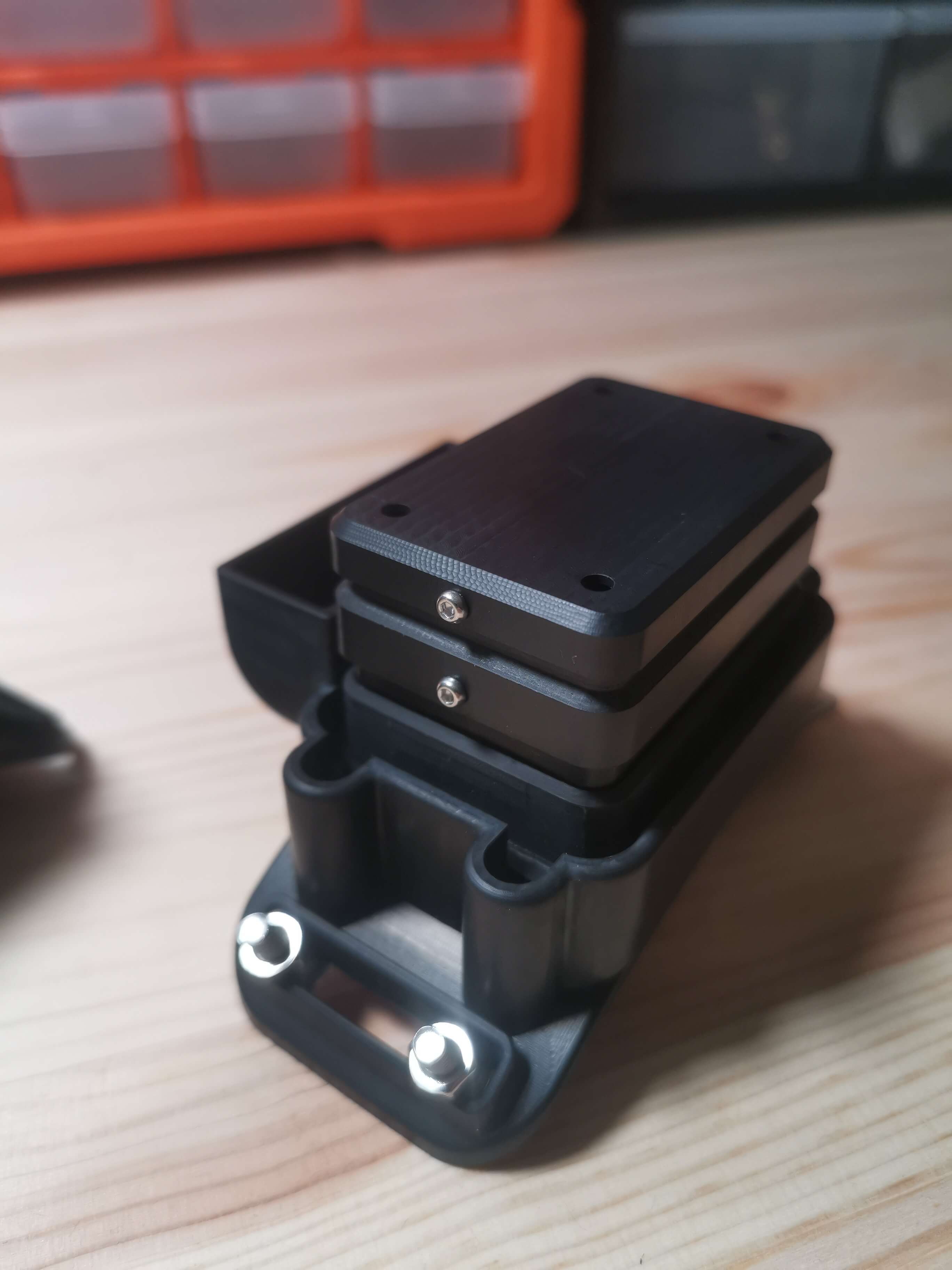
16 April 2024 9:35am
Reminds me that we should look at both terrestrial and marine applications when we get stuck in to the demo builds to make sure we cover use cases
16 April 2024 10:22am
'Most importantly, we have to make it play a MIDI version of the DoctorWho theme song when you arm the device. That has to be the #1 feature if you ask me!'
Seconded!
Wildlife Drones will be at the 21st Australasian Bat Society Conference
9 April 2024 6:03am
Underwater advertisement call of the threatened Telmatobius rubigo (Anura: Telmatobiidae
6 April 2024 9:56pm
Bioacoustic device security in urban parks
8 March 2024 2:49pm
24 March 2024 4:53am
Yes, I agree with Panji......make sure you have notes of where you put them and remember that photos of trees without leaves look completely different 6 months later......not that I would ever make that mistake.........well not again......especially after spending 2 days trying to find 3 ARU's.
24 March 2024 9:38pm
We suggest and use Python Locks for urban areas here in Australia. Can also screw the Mini 2 to a tree or phone post with the python lock.
5 April 2024 12:55pm
We've deployed passive acoustic monitors in various urban environments without any issues of theft, even in locations where camera traps and other technology has been historically taken or vandalised. I think acoustic sensors generally look less valuable than other technology, and I would recommend removing or covering any stickers or labels on devices that would otherwise make them more appealing! Placing them in hedgerows or on trees with some (but not too much!) foliage will help keep them well hidden too.
Not so silent spectators: How spectator vessels at international sailing regattas alter marine soundscapes
3 April 2024 4:50pm
Seventh International Conference on the Effects of Noise on Aquatic Life
3 April 2024 4:34pm
Postdoctoral Research Associate in Ecoacoustics
2 April 2024 2:49pm
Think Wildlife Podcast | The Role of Bioacoustics in Conservation with Bourhan Yassin, Founder of Rainforest Connection
28 March 2024 11:27pm
AI for Conservation!
4 March 2024 8:51pm
22 March 2024 12:29pm
Welcome, Have you considered participating in any of the AI for Good challenges. I find it is good way to build a nice portfolio of work. Also contributing to existing open source ML projects such as megadetector or to upstream libraries such as PyTorch is good way to getting hired.
GitHub - alexvmt/awesome-data-and-ml-for-good: Collection of resources for data and ML for good and how to get involved.
Collection of resources for data and ML for good and how to get involved. - alexvmt/awesome-data-and-ml-for-good
22 March 2024 5:57pm
Thank you for the tip! I'll definitely consider contributing to open source projects and taking part in challenges :)
25 March 2024 5:22am
We could always use more contributors in open source projects. In most open source companies Red Hat, Anaconda, Red Hat and Mozilla, people often ended up getting hired largely due to their contributions on open source projects. These contributions were both technical such as writing computer code and non-technical such as writing documentation and translating tools in their local language.
Add Bio-accoustics support · Issue #441 · microsoft/CameraTraps · GitHub
Please kindly add support for using pytorch wildlife platform for bio-acoustics to analyses audio recordings of insects, birds and animals including sounds that are inaudible to human ears. Having a single code base to analysis both opti...




































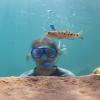













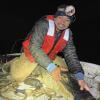
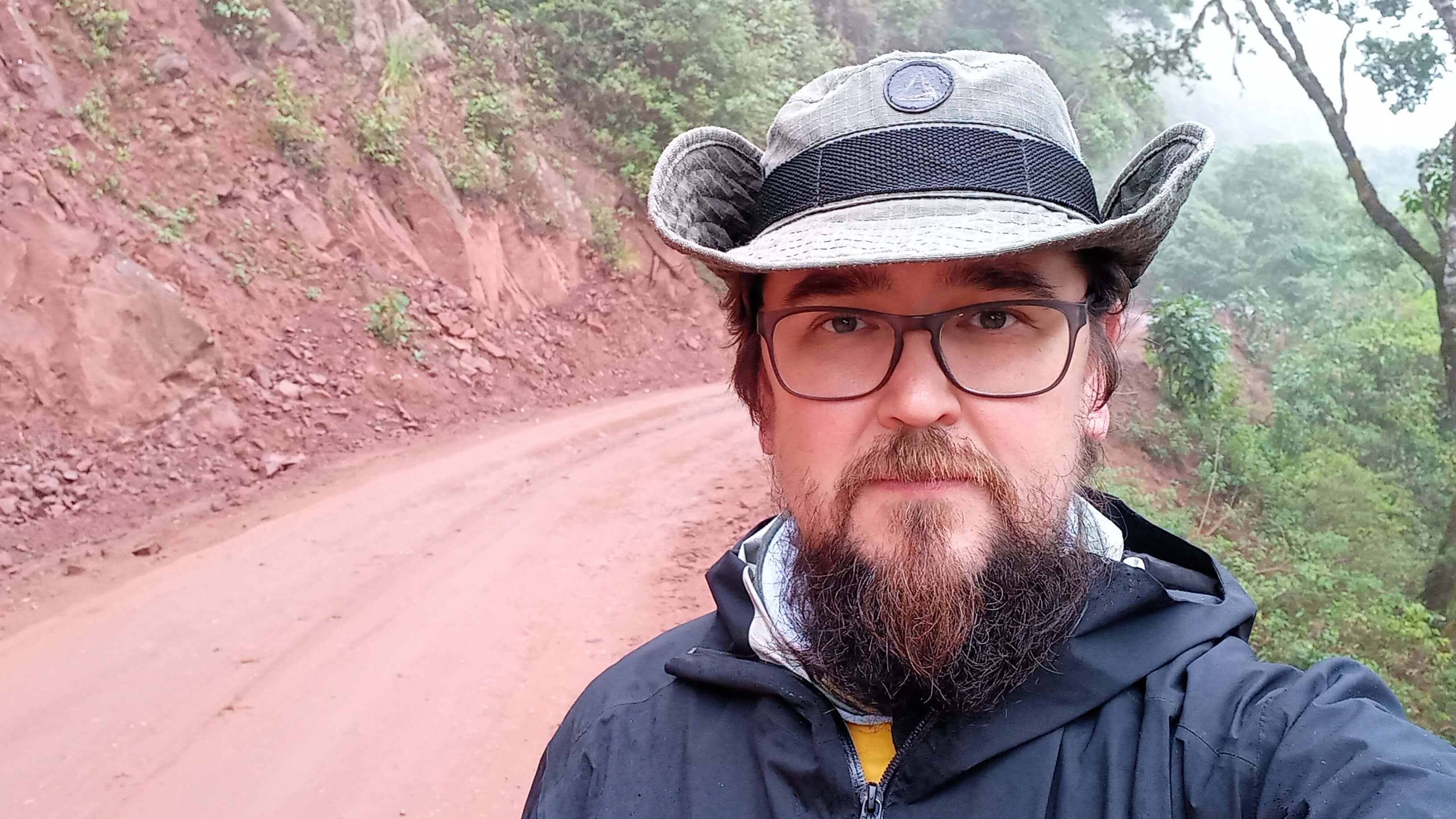








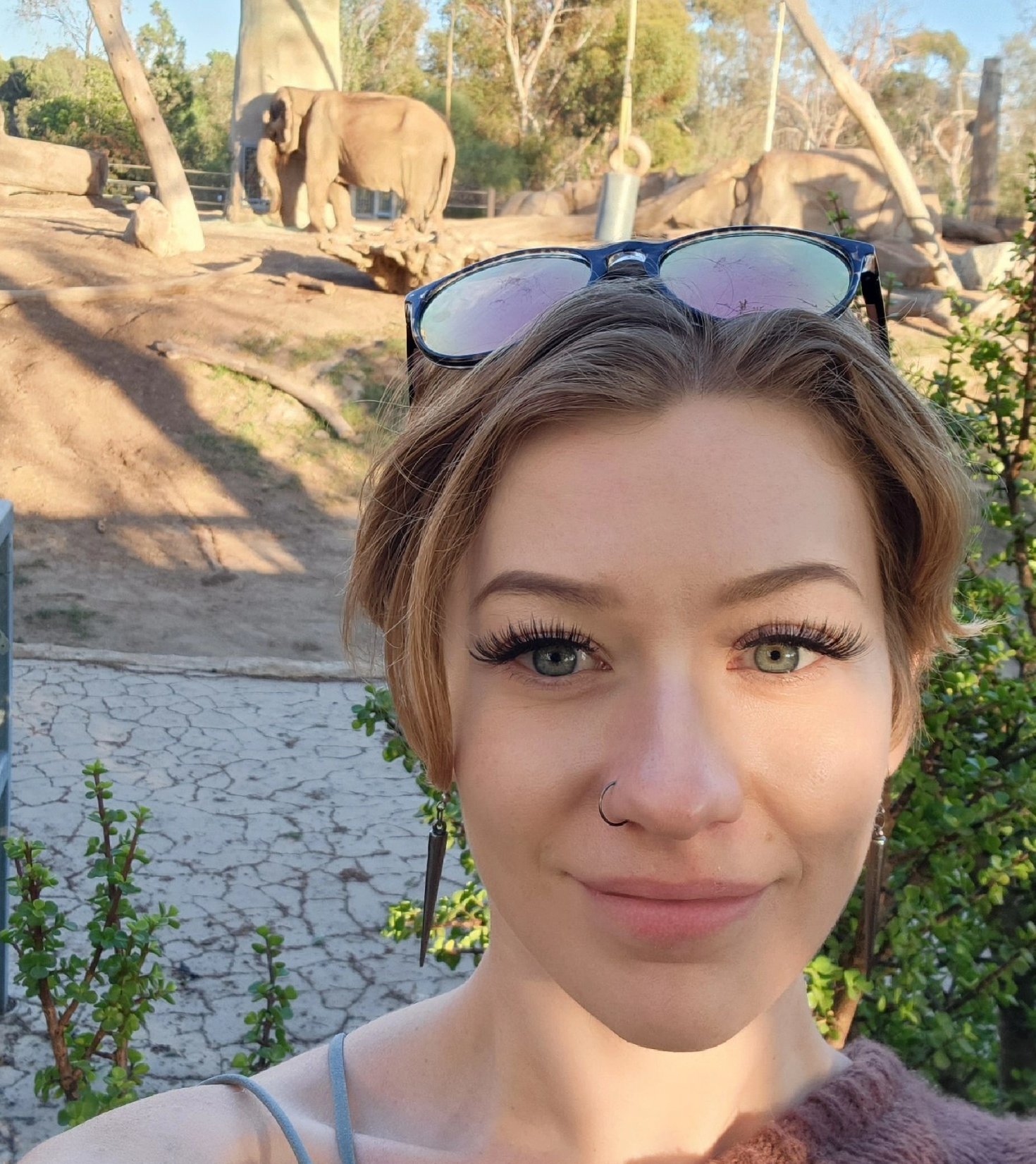




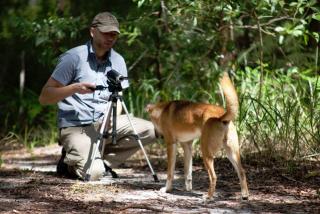





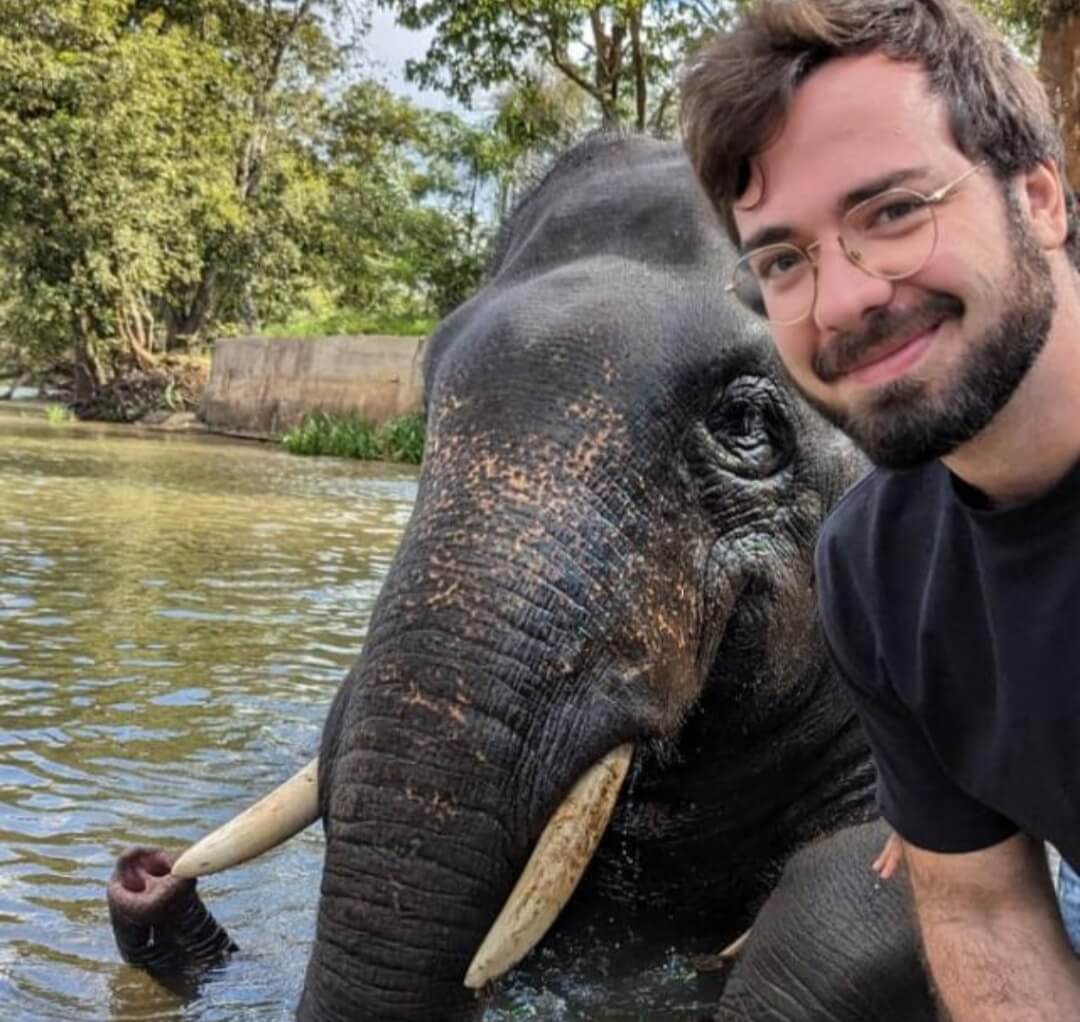
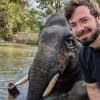
16 May 2024 9:34pm
We had this same issue, and found that the firmware version 1.9.2 was our issue. We bumped it back to 1.9.0 and our energy consumption was back to normal.
We record data for 7 hours a day (3.5 hour blocks), using sandisk extreme 64GB micro SD cards. We don’t use re-chargeable batteries, and the ARUs are set for 14-day periods before being collected. With the 1.9.2 firmware, for some reason they’d only record for maybe 9 days tops before dying. At firmware 1.9.0, we were back to our normal recording of minimum 14 days (although they often last longer). We tried different batteries, different energy saving settings, nothing worked besides bumping the firmware down. This issue was in both our brand new AudioMoths and 2-year old AudioMoths.
I hope this helps.